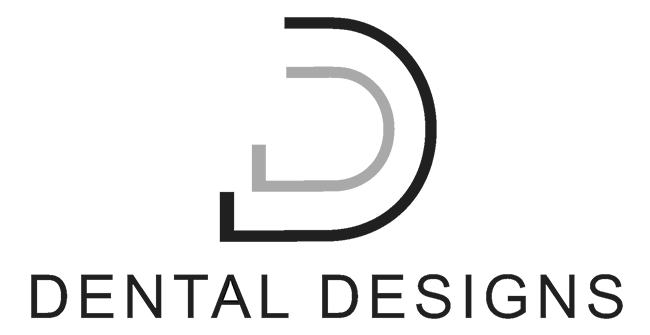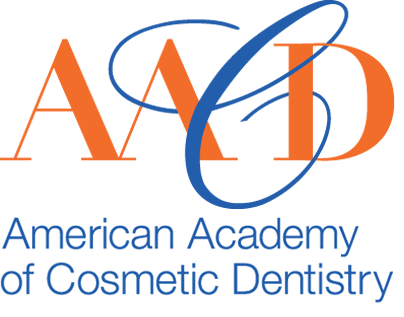Fixed
Houston Dental Laboratory Services
As a cosmetic and crown and bridge specialty laboratory, Dental Designs offers a wide range of all-ceramic and traditional restorative options. Because material choice plays a significant role in successful esthetics, we encourage our doctors to consult with our technicians to determine the best restorative option for each patient's indications.
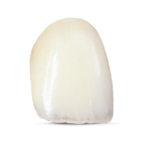
IPS e.max®
The most established name in high-translucency restorations, IPS e.max® is an ideal option for anterior restorations. Fabricated on our cutting-edge CAD/CAM workflow for maximum precision to reduce chair time, lithium disilicate IPS e.max restorations offer a wide range of shades while maintaining consistent translucency. With average flexural strengths of 360 MPa, it's approximately four times as durable as feldspathic porcelain.
IPS e.max press is indicated for full anterior or posterior crowns, veneers, inlays, onlays,as well as three-unit bridges having only one pontic with the second bicuspid as the most distal abutment.
Bridges which include molars, Maryland style bridges and bridges which have a short vertical height that does not allow for adequate connector height.
D2740 Crown
D2610 Inlay for 1 surface
D2620 Inlay for 2 surfaces
D2630 Inlay for 3 surfaces
D2962 Labial Veneer
D2783 Crown 3/4 Porcelain Ceramic (does not include veneers)
Anterior full-coverage crowns require a chamfer or shoulder margin. A circular shoulder is prepared with rounded inner edges or a chamfer at an angle of 10-30°: the width of the shoulder/chamfer is approx. 1 mm. Facial reduction is 1.5 – 2 mm; 1 – 1.5 mm lingual contact clearance. Incisal reduction is 1.5 – 2 mm with rounded internal line angles, and an incisal edge at least 1mm wide to permit optimum milling of the incisal edge during CAD/CAM processing.
Posterior full-coverage crown requires a chamfer or shoulder margin. A circular shoulder is prepared with rounded inner edges or a chamfer at an angle of 10-30°: the width of the shoulder/chamfer is approx. 1 mm. Occlusal reduction is 1.5 – 2 mm: axial reduction (buccal, lingual and interproximal) is 1.5 mm with rounded internal line angles.
IPS e.max layered – can be either cemented using a resin reinforced glass ionimer such as Relyx Luting cement. Or bonded using a resin cement, when extra strength is needed due to lack of retention on the prep, use a resin cement such as Relyx Unicem or Relyx Ultimate.
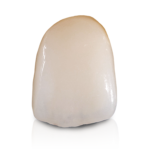
IPS e.max® Zirconia
Dental Designs' take on PFZ restorations, IPS e.max® zirconia restorations feature lithium disilicate ceramic pressed to a CAD/CAM designed and fabricated zirconia coping for improved strength. Eliminating dark spots at the margin associated with metal substructures, these restorations also offer a more conservative preparation than conventional IPS e.max crowns.
IPS e.max press is indicated for full anterior or posterior crowns, veneers, inlays, onlays,as well as three-unit bridges having only one pontic with the second bicuspid as the most distal abutment.
Bridges which include molars, Maryland style bridges and bridges which have a short vertical height that does not allow for adequate connector height.
D2740 Crown
D2610 Inlay for 1 surface
D2620 Inlay for 2 surfaces
D2630 Inlay for 3 surfaces
D2962 Labial Veneer
D2783 Crown 3/4 Porcelain Ceramic (does not include veneers)
Anterior full-coverage crowns require a chamfer or shoulder margin. A circular shoulder is prepared with rounded inner edges or a chamfer at an angle of 10-30°: the width of the shoulder/chamfer is approx. 1 mm. Facial reduction is 1.5 – 2 mm; 1 – 1.5 mm lingual contact clearance. Incisal reduction is 1.5 – 2 mm with rounded internal line angles, and an incisal edge at least 1mm wide to permit optimum milling of the incisal edge during CAD/CAM processing.
Posterior full-coverage crown requires a chamfer or shoulder margin. A circular shoulder is prepared with rounded inner edges or a chamfer at an angle of 10-30°: the width of the shoulder/chamfer is approx. 1 mm. Occlusal reduction is 1.5 – 2 mm: axial reduction (buccal, lingual and interproximal) is 1.5 mm with rounded internal line angles.
IPS e.max layered – can be either cemented using a resin reinforced glass ionimer such as Relyx Luting cement. Or bonded using a resin cement, when extra strength is needed due to lack of retention on the prep, use a resin cement such as Relyx Unicem or Relyx Ultimate.
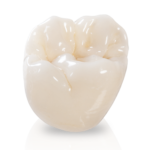
Full-Contour Zirconia
The only zirconia available that recreates the IPS e.max® shade system, Full-contour zirconia offers optimal esthetics, particularly when coupled with existing IPS e.max restorations. Full-contour zirconia provides virtually unbreakable strengths up to 1,200 MPa that make it ideal for posterior restorations. With Dental Designs' expert CAD/CAM technicians' attention to detail, every crown features lifelike occlusal anatomy and seats quickly with minimal chairside adjustment.
Full-contour zirconia is so versatile, it can be used in almost any situation from singles, bridges with any combination of abutments and pontics, inlay bridges, Maryland type bridges and screw retained implants. Also an esthetic alternative to a PFM with metal occlusion due to limited space.
Contraindications include:
When esthetic expectations are high and it is important that the restorations match surrounding natural dentition or other existing restorations
If bonding is necessary to retain the restoration, bond strength is weaker and less predictable than other ceramics
D2740 Crown – Porcelain/Ceramic Substrate
D6245 Pontic Porcelain/Ceramic
D6740 Abutment Crown Porcelain/Ceramic
Shoulder preparation not needed. A mild champfer or a feather edge margin is good. 1mm buccal, lingual and occlusal reduction is ideal, but can go to .5mm in some areas, when reduction is limited.
Minimum occlusal reduction of 0.5 mm; 1 mm is ideal.
Adjustments and polishing: Adjust Full-contour zirconia crowns and bridges using water and air spray to keep the restoration cool and to avoid micro-fractures with a fine grit diamond. If using air only, use the lightest touch possible when making adjustments. A football-shaped bur is the most effective for occlusal and lingual surfaces (on anterior teeth); a tapered bur is the ideal choice for buccal and lingual surfaces.
Polish Full-contour zirconia restorations with the porcelain polishing system of your choice.
Full-contour zirconia may be cemented using a resin reinforced glass ionomer such as Relyx Luting cement. When a greater bond is needed do to the lack of a retentive preparation, use resin cement like Relyx Unicam or Relyx Ultimate.
Before cementing all Full-contour zirconia crowns, the interior surface of the crown needs to be cleaned with Ivoclean (Ivoclar Vivadent; Amherst N.Y.). This is critical in assuring maximum bond strength.
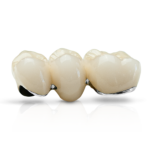
PFM
Rely on Dental Designs' experienced ceramists to produce hand-stacked porcelain on every traditional porcelain fused to metal crown. Available with your choice of alloy -- non-precious, semi-precious or high noble -- to help manage patients' budgets and insurance reimbursement policies, our PFM restorations are also available with a porcelain margin for advanced esthetics.
Our PFMs can be used for crowns and bridges (up to fourteen units). PFMs can be manufactured to non-precious, semi-precious, and yellow high noble copings and can be used in conjunction with cast partials and implants.
Contraindicated when the patient has a metal allergy or when the size of the tooth pulp is negligibly smaller thus compromising the tooth preparation process. It is also contraindicated when the clinical tooth crown is very short and lacks the required stability including retention that is enough to provide the space for porcelain and metal.
D2750 Crown Porcelain fused to high noble
D2751 Crown Porcelain fused to non-precious
D2752 Crown Porcelain fused to semi-precious
D6750 Crown Porcelain fused to high noble (bridge units)
D6751 Crown Porcelain fused to non-precious (bridge units)
D6752 Crown Porcelain fused to semi-precious (bridge units)
The ideal preparation for PFMs is a chamfer margin preparation. If a porcelain labial margin is prescribed, then a shoulder margin preparation is required.
Feather-edge margin preparations are indicated for full-cast restorations.
Panavia 21 – tin plated
Glass ionomer cement (GC Fuji, GC America)
Zinc Phosphate Polycarboxylate
Resin Ionomer cement (RelyX, 3M ESPE)

Full-Cast Crown
When limited clearance or bruxing is a concern, full-cast crowns remain many doctors' choice of posterior restoration. Fabricated from non-precious or yellow high noble alloy, full-cast crowns offer unsurpassed strength, while causing less wear on oppositional enamel than any ceramic available. Highly resistant to plaque and bacteria, full-metal crowns are an optimal choice when esthetic considerations aren't a factor.
Full-cast gold crowns are indicated for crowns, veneers, inlays, onlays and bridges.
Full-cast gold crowns are contraindicated for partials and implants.
D2790 Crown Full-Cast Hi-Noble Metal
D2791 Crown Full-Cast Predominantly Base Metal
D2792 Crown Full-Cast Noble Metal
Inlays and onlays can also be fabricated as a full-cast restoration. Feather-edge margin preparations are indicated for full-cast restorations, but any margin preparation may be used.
Panavia 21 (Must be tinplated if precious metal is used)
Glass ionomer cement (GC Fuji, GC America)
Zinc Phosphate Polycarboxylate Resin Ionomer cement (RelyX, 3M ESPE)
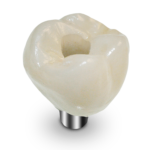
Implant Crown
Restore implants with confidence when you team with Dental Designs. Available in your choice of high noble or non-precious, our implant crowns are fabricated for high performance and the ultimate in esthetics.
D6057 Implant Abutments
Use manufacturer’s tooling to remove healing cap. For multiple units, start in the posterior and work toward anterior. Then, use manufacturer’s tooling to place transfer coping. Ensure components are fully engaged before tightening screw.
Take an X-ray to verify proper seating of components. Next, ensure transfer coping does not hit tray. Use heavy body polyvinylsiloxane impression material. Record impression. Finally, when impression tray is removed, the transfer coping stays in the mouth. Remove transfer coping and replace healing cap.
For multiple units, start in anterior and work toward posterior. Check fit of impression coping into impression. Send to lab.
Seat abutment. Torque screw into place per manufacturer’s recommendations. Next, use composite to fill over the implant screw.
Cement restoration over implant with a resin-reinforced ionomer (i.e., RelyX, 3M ESPE).
